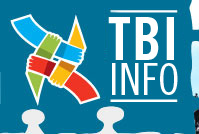What is the definition of rehabilitation?
Here are a few definitions.
Rehabilitation is the science of evaluating the consequences of a person’s illnesses and injuries, and of implementing measures to return them to their maximum autonomy (being autonomous means that they are able to do things on their own and provide for themselves). [1]
Rehabilitation also refers to the organization of services that allow a disabled person to develop their physical and mental abilities as well as their potential for social autonomy. [2]
For impaired and disabled persons, their families and their loved ones, rehabilitation is a process of learning and empowerment (taking charge of their situation means making decisions and choosing for themselves) that, during a rehabilitation project, is aimed at realizing a life plan in order to attain optimal social participation. This process is aligned with the actualization of the life projects of the disabled person, their family and their loved ones. [3]
In rehabilitation, all aspects of an individual are taken into account:
• their motor skills (moving about, get around)
• their cognitive skills (thinking, understanding)
• their behaviour (taking action)
• their social interactions (how to act in the company of others)
Rehabilitation encompasses all medical and social specialties (physicians, specialists, physiotherapists, social workers, etc.).
Family and loved ones are also part of the rehabilitation process.
Service organization in rehabilitation
• The purpose of rehabilitation services is to support the brain-injured person, their family and their loved ones so that they can learn how to adjust to the new situation and take charge of it.
• Services are coordinated.
• They address the specific needs of each individual.
• Time is allotted for each service based on the person’s needs.
• A personalized intervention plan (PIP) is used to plan and coordinate activity. It emphasizes communication and allows for feedback.
• Services encourage exchanges between the person, their family and their caregivers.
[1] Translation. Blouin, Maurice, and Bergeron, Caroline. Dictionnaire de la réadaptation, tome 2 : termes d’intervention et d’aides techniques. Les publications du Québec, 1997.
[2] Translation. Fougeyrollas, P., R. Cloutier, H. Bergeron, J. Côté, and G. St-Michel. Classification québécoise du Processus de production du handicap. Québec, International Network on the Disability Creation Process, 1998.
[3] Translation. Le Bouclier Rehabilitation Centre. Document de référence pour l’élaboration des plans d’intervention individualisés (PII) au C.R. Le Bouclier, “Cadre conceptuel et composantes essentielles,” Chapters 1-2, June 10, 2004, p. 7.
Terms of Use | 2007-2008 All rights reserved © INFO-TBI. Graphic design : François Ménard | Design : WebConforme

